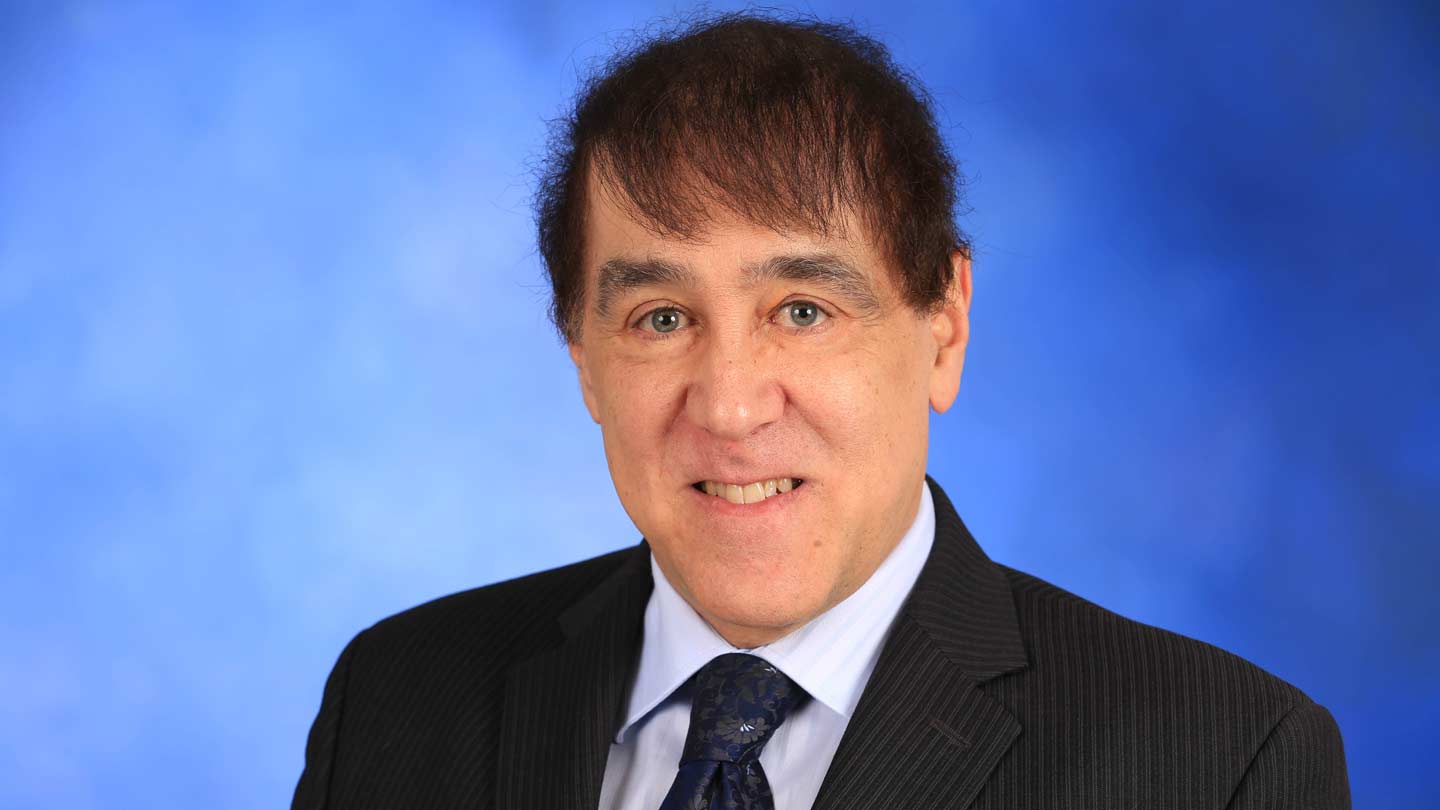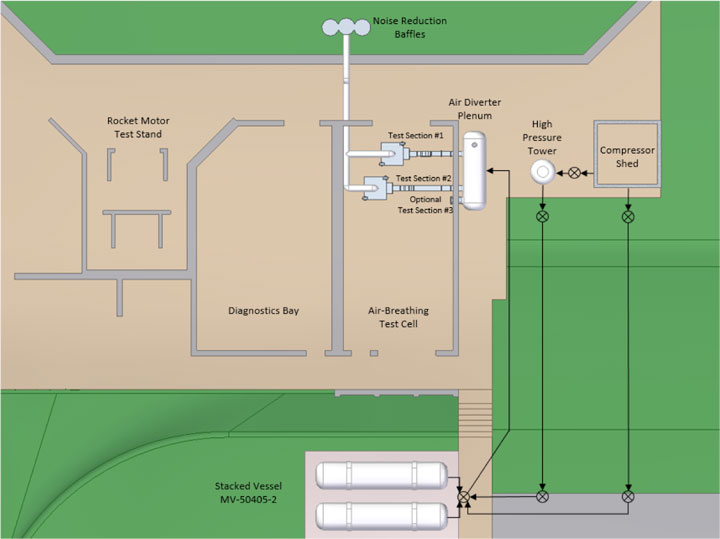
Dr. Phillip Ligrani looks forward to operating the new Transonic/Supersonic/Windtunnel at speeds of Mach 1.6 to Mach 3.
Michael Mercier | UAH
The University of Alabama in Huntsville (UAH) will soon be home to a new $2 million wind tunnel system championed by the university's eminent scholar in propulsion, Dr. Phillip Ligrani.
Currently under construction, the new TranSonic/SuperSonic/WindTunnel or TS/SS/WT will reside in the Air Breathing Test Cell at UAH's Johnson Research Center. The test sections of the facility will reach speeds and air velocities ranging from Mach 1.6 with an airspeed of approximately 1,230 miles per hour to Mach 3 with an airspeed of about 2,300 mph, says Dr. Ligrani, the project's principal investigator and a professor of mechanical and aerospace engineering.
"That gives us the conditions we need for testing," Dr. Ligrani says. Possible test applications include supersonic engine intakes, scramjets and hybrid space vehicles and components.

A schematic of the TranSonic/SuperSonic/WindTunnel being built at Johnson Research Center.
UAH
"We're hoping to have the facility completed and partially operational by the end of this calendar year," Dr. Ligrani says. "We are receiving excellent support from UAH building services in developing and installing the various structures needed to support the wind tunnel. Die-matic Tool Co. Inc. in Meridianville has also been working closely with us to manufacture various parts and components needed for the installation."
Four 14-foot-long tanks valued at $1 million and weighing 16 tons each have been donated to the university by the U.S. Air Force's Arnold Engineering Development Center in Manchester, Tenn. The tanks started life as rocket fuel storage but will be used in conjunction with a fifth tank to provide 50 cubic meters of compressed air storage at supply pressures up to 2,500 pounds per square inch.
Air from the tanks will be routed through pressure regulating valves to two wind tunnels that are slightly larger than washing machines, where it will rush past objects under research in the 9.6-inch by 4-inch test bed chambers and then be exhausted outdoors through a noise reduction baffle system.
"An elaborate valve system will control the flow," Dr. Ligrani says. "This will ensure high enough flow rates and pressures to reach the required supersonic speeds."
The project was awarded $249,810 by the Alabama Innovation Fund.
"The Alabama Innovation Fund is a key element in our strategy to stimulate breakthrough research at universities and institutions across the state,” says Greg Canfield, secretary of the Alabama Department of Commerce. “The wind tunnel project being directed by Dr. Ligrani at UAH exemplifies the kind of investigation that can lead to new insights and new products in the important aerospace sector."
"The state of Alabama provides an excellent and unique environment for the development of advanced research efforts, which are tied to important and vital economic activities, which benefit the scientific and engineering communities, not only for the Huntsville area, but for the entire state," says Dr. Ligrani.
The Innovation Fund Award was supplemented by money from UAH's Office of the Vice President for Research and Economic Development, headed by Dr. Ray Vaughn. The money is being used for components and equipment needed to install and operate the wind tunnel.
"We are pleased to have Dr. Ligrani's expertise within our UAH Propulsion Research Center. His research efforts will be greatly enhanced with the new SuperSonic/TransSonic/WindTunnel that he is constructing, and it will open up new research capability that heretofore did not exist at UAH," says Dr. Vaughn.
"We are very grateful to Dr. Vaughn," Dr. Ligrani says, "for the generous supplemental support from his office. I am also grateful to the Propulsion Research Center and the Department of Mechanical and Aerospace Engineering for the outstanding support provided to this and to related efforts since my arrival at UAH in August of 2014."